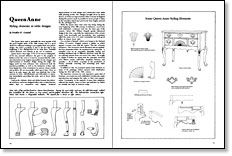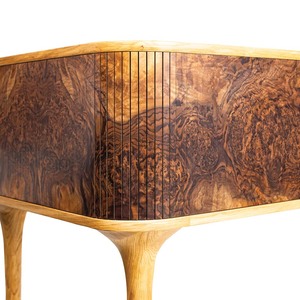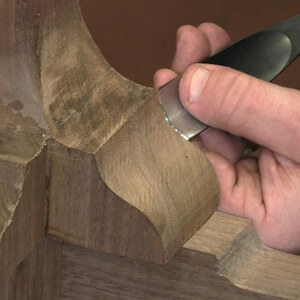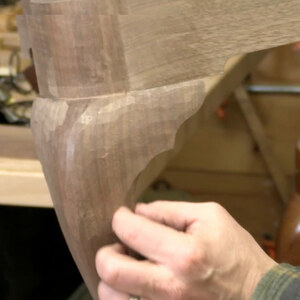
Synopsis: The Queen Anne style is generally the most popular of all the good English styles of the 18th century, and in this article, Franklin H. Gottshall explains why it’s a good choice for craftsmen wishing to put together their own period design. Gottshall outlines basic elements of the style (which is attributed to cabinetmakers of the day, not to the queen herself). Drawings of commonly seen legs, feet, and other styling elements help illustrate the descriptions of the clean lines, curved elements, and restraint in ornament. Finally, Gottshall offers some examples of bad Queen Anne styles, an entertaining ending note.
The Queen Anne style is generally the most popular of all the good English styles of the 18th century and is a good choice for craftsmen wishing to put together their own period design. The style’s popularity is due to the fact that in the beginning it was distinguished for its clean lines, beautiful curved elements and restraint in the use of ornament.
Queen Anne’s short reign (1702-1714) was not distinguished for any personal influence she gave to the progress of fashion in her day, and so it must be assumed that the craftsmen themselves were largely responsible for the changes and improvements in furniture design during her reign. The happy result was that craftsmen, who understood both the practical possibilities as well as the limitations of their craft, were largely free of the domination by patrons whose wealth and position did not necessarily reflect good taste. Thus, at least in its early stages, the style was relatively free of the excesses in form, embellishment and elaboration so prevalent immediately preceding this style, and in those which followed.
Cupboards, cabinets, chairs and tables became less elaborate and fussy, and were designed with a view to their function rather than to ostentation and display. Technical improvements in both design and construction were made with pleasing results. The changes brought about by these factors, as well as an improvement of the economy in England during this period, made it possible for more people to share in the amenities which had previously been largely reserved for the privileged few.
While the Queen Anne style came into being during the very beginning of the 18th century, its influence, once it was well established, continued well into the latter part of the century. Artists like William Hogarth greatly influenced design at this time, especially the employment of the reverse curve, both structurally and decoratively. Also sometimes called the cyma curve, it is used consistently and with good effect in Queen Anne style.
From Fine Woodworking #3
For the full article, download the PDF below:
Fine Woodworking Recommended Products

Sketchup Class


Dividers






















Log in or create an account to post a comment.
Sign up Log in